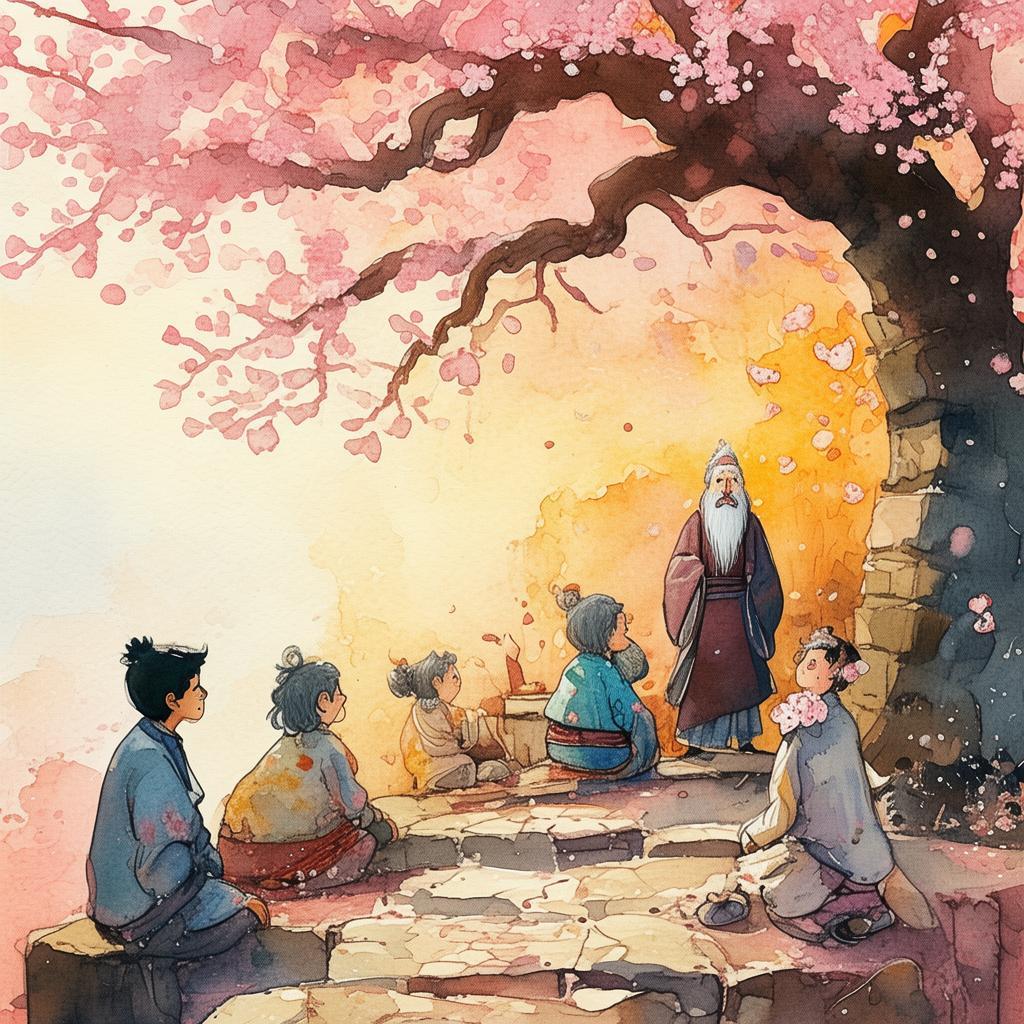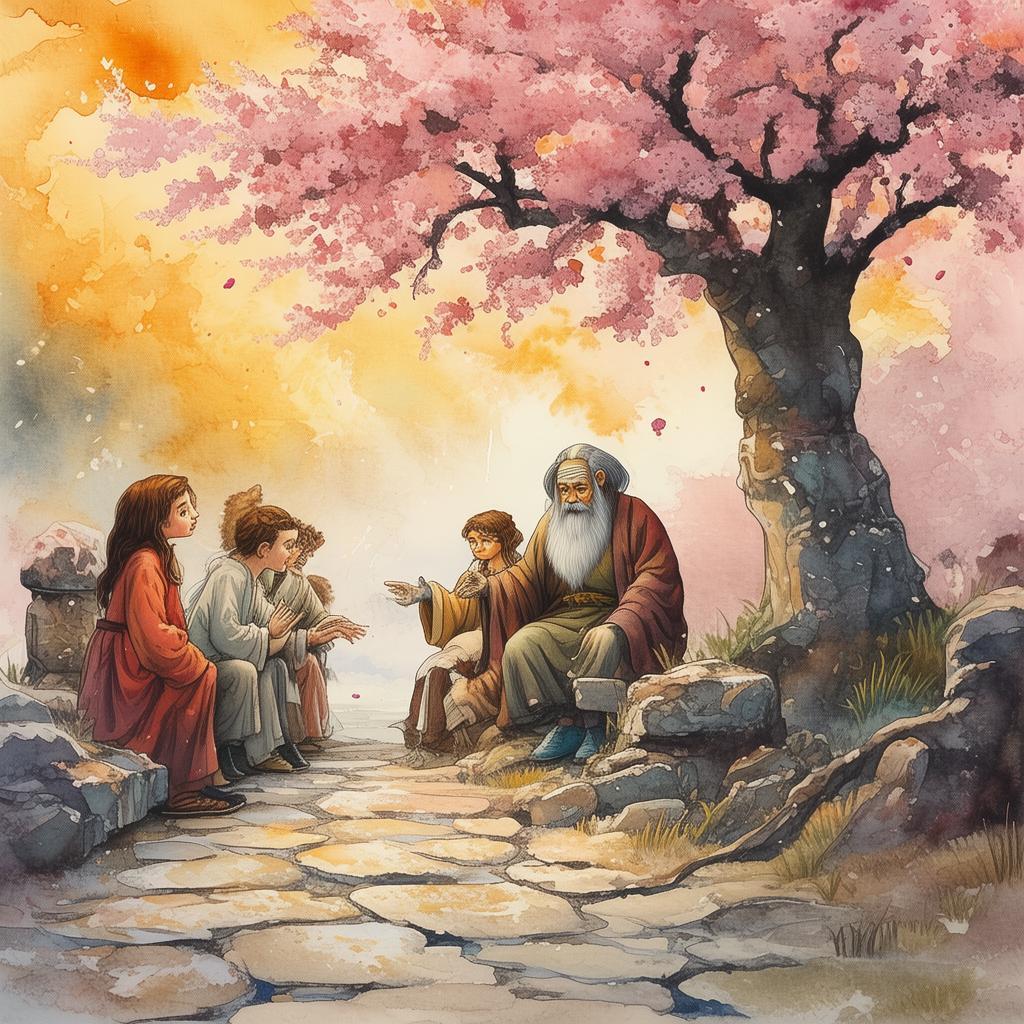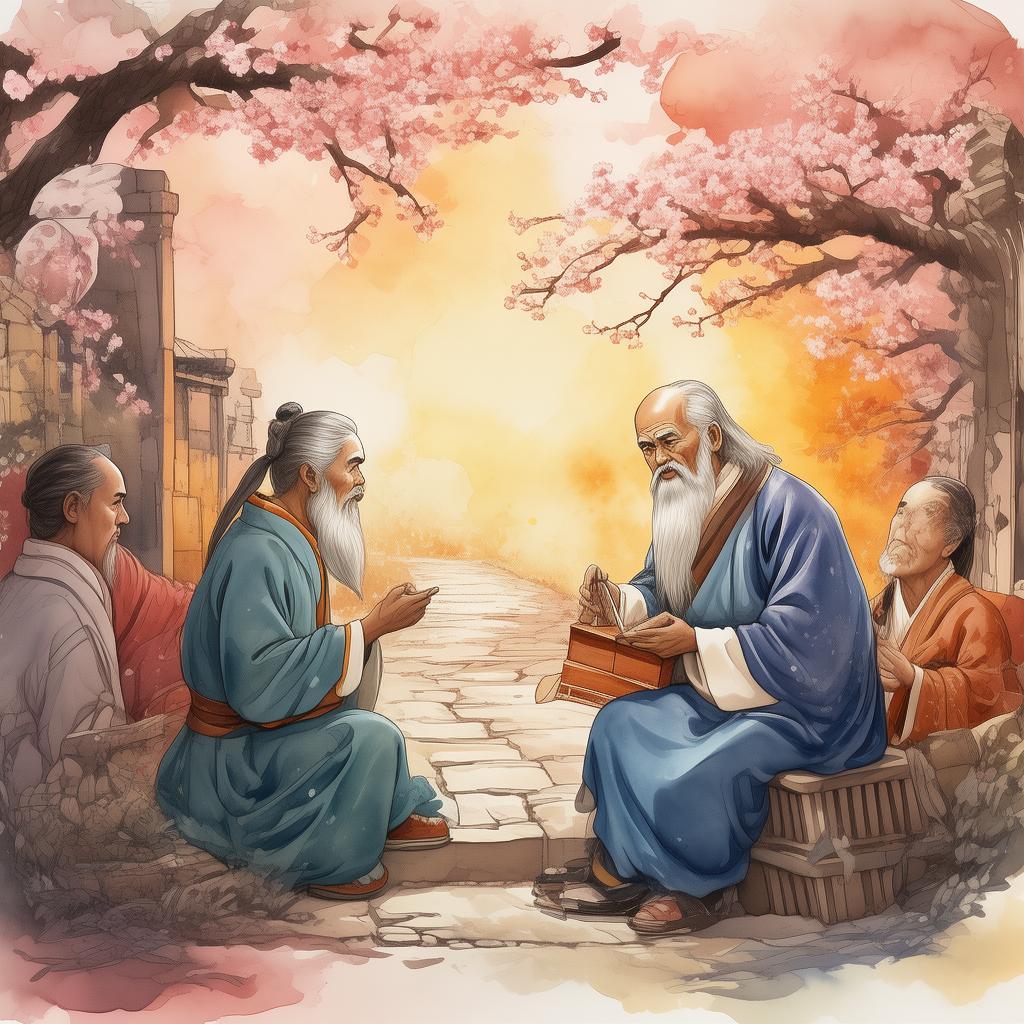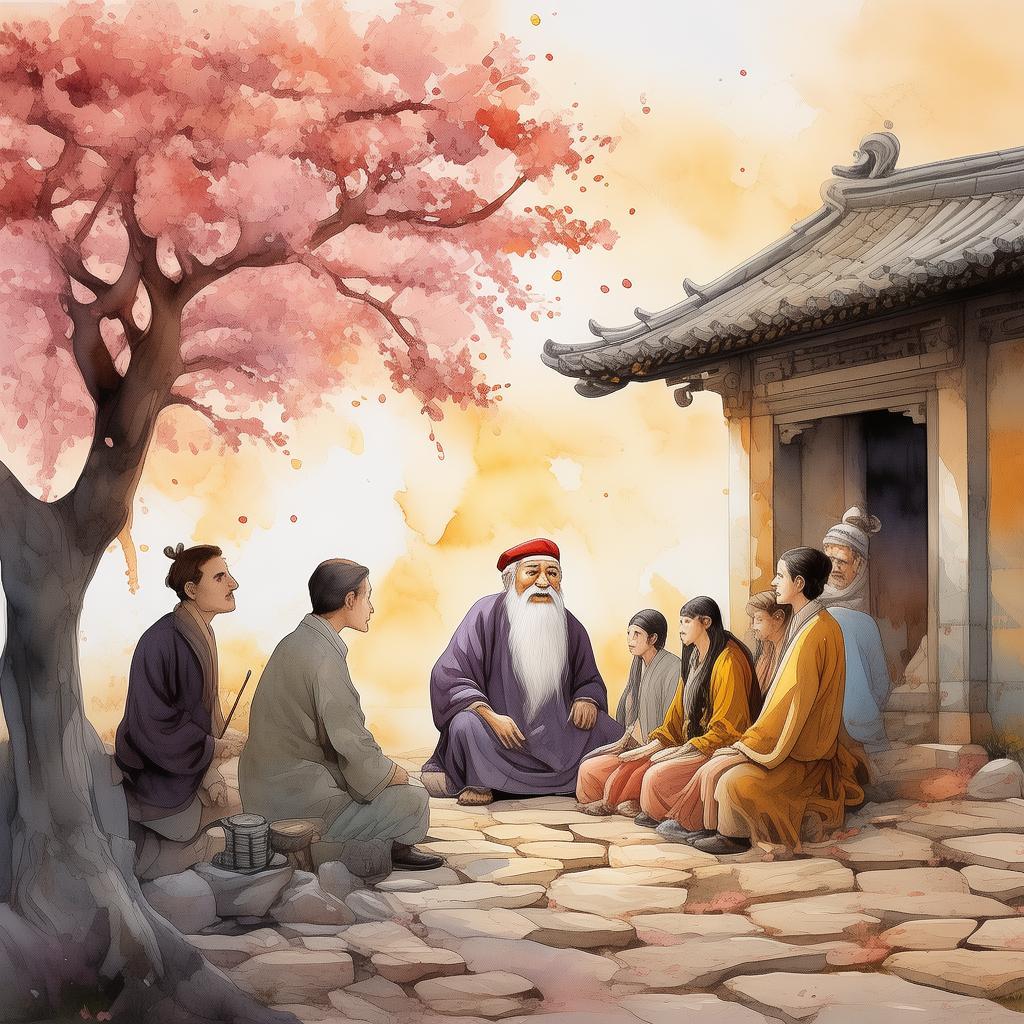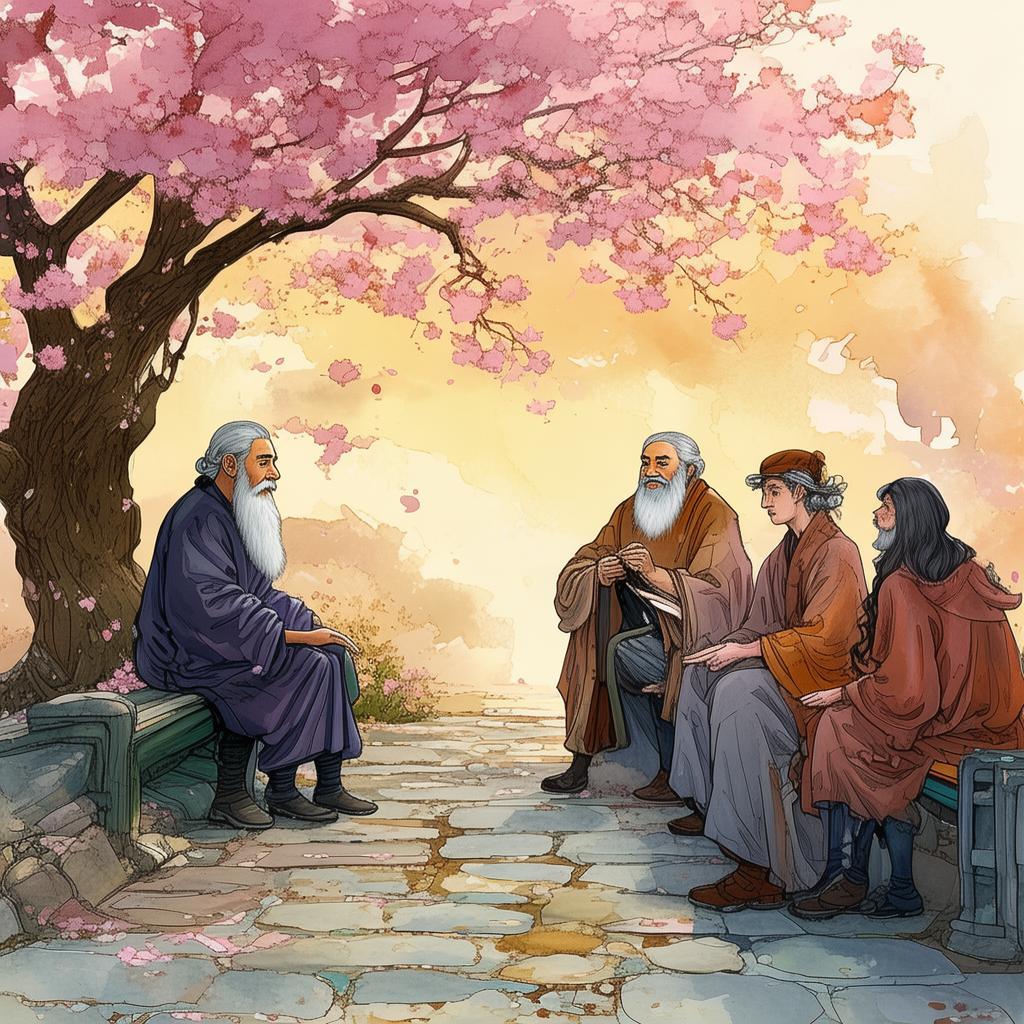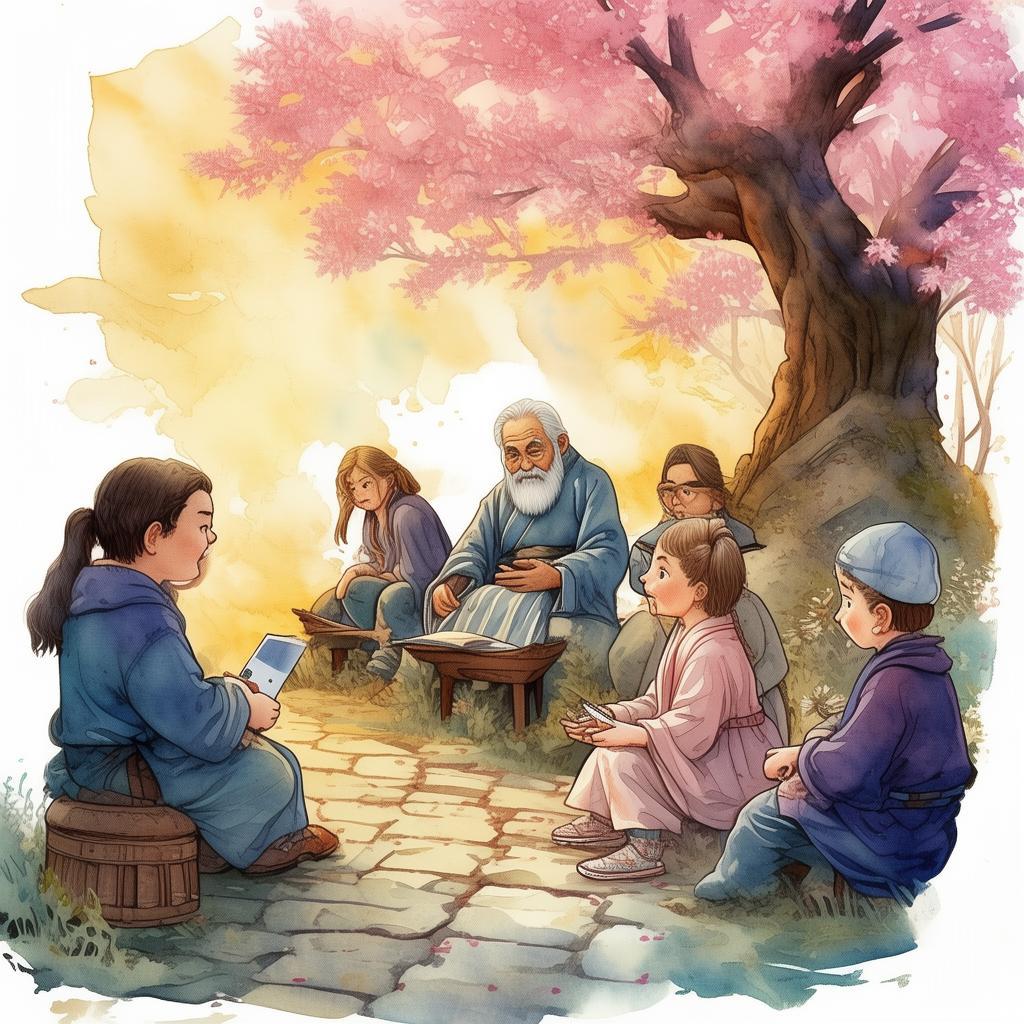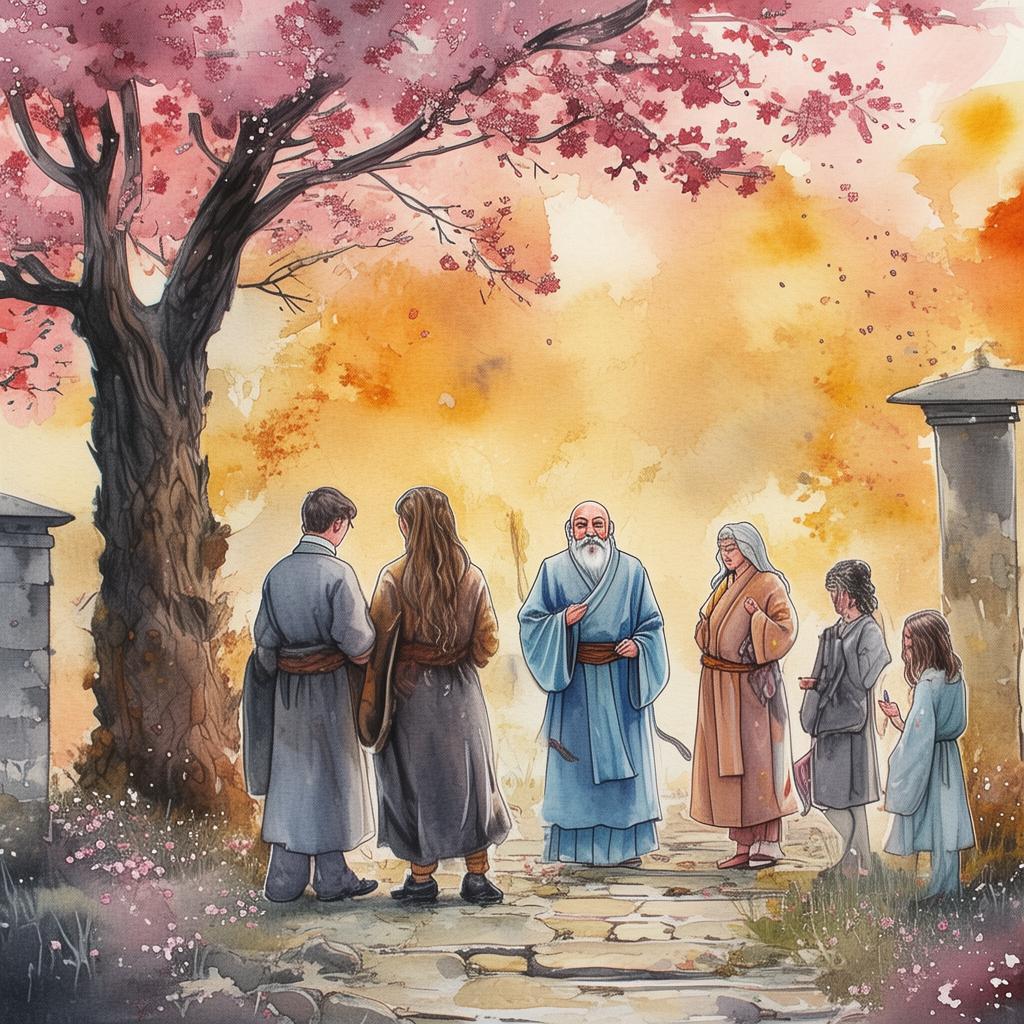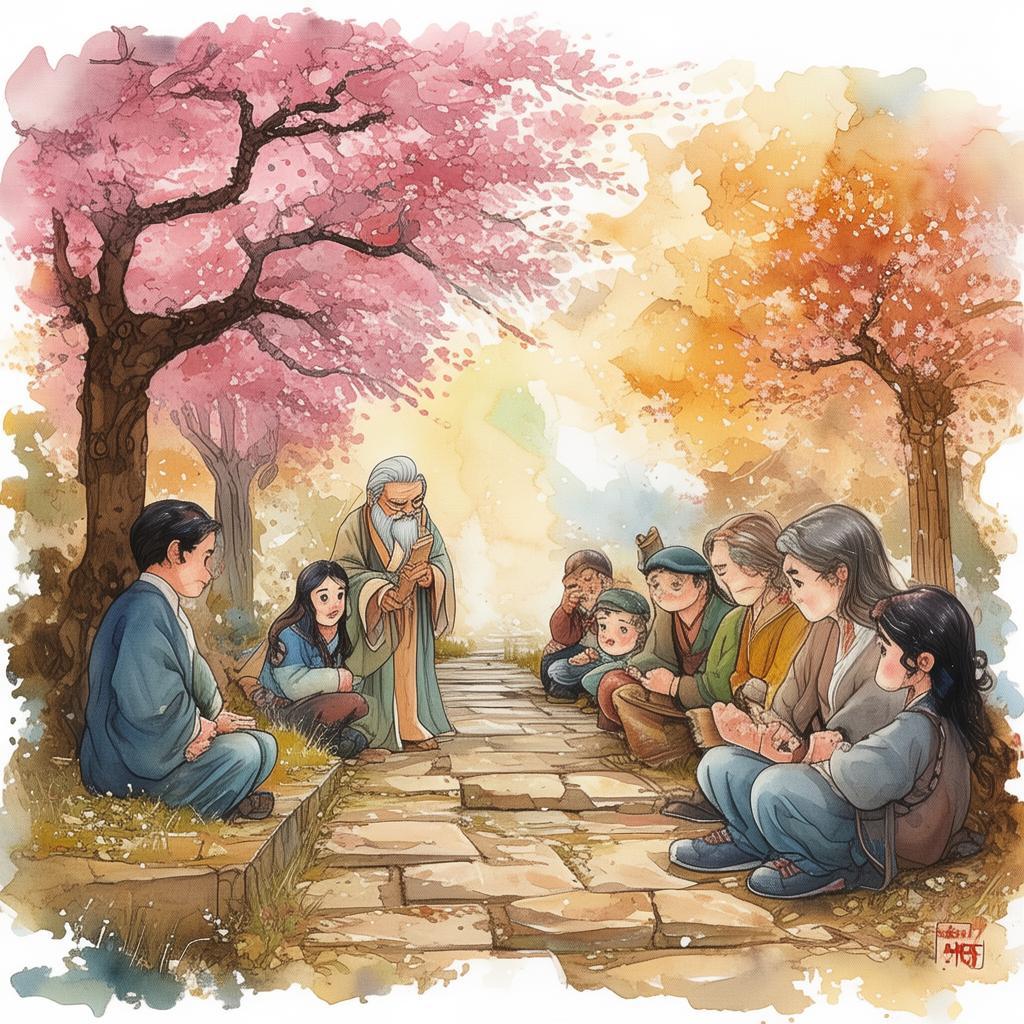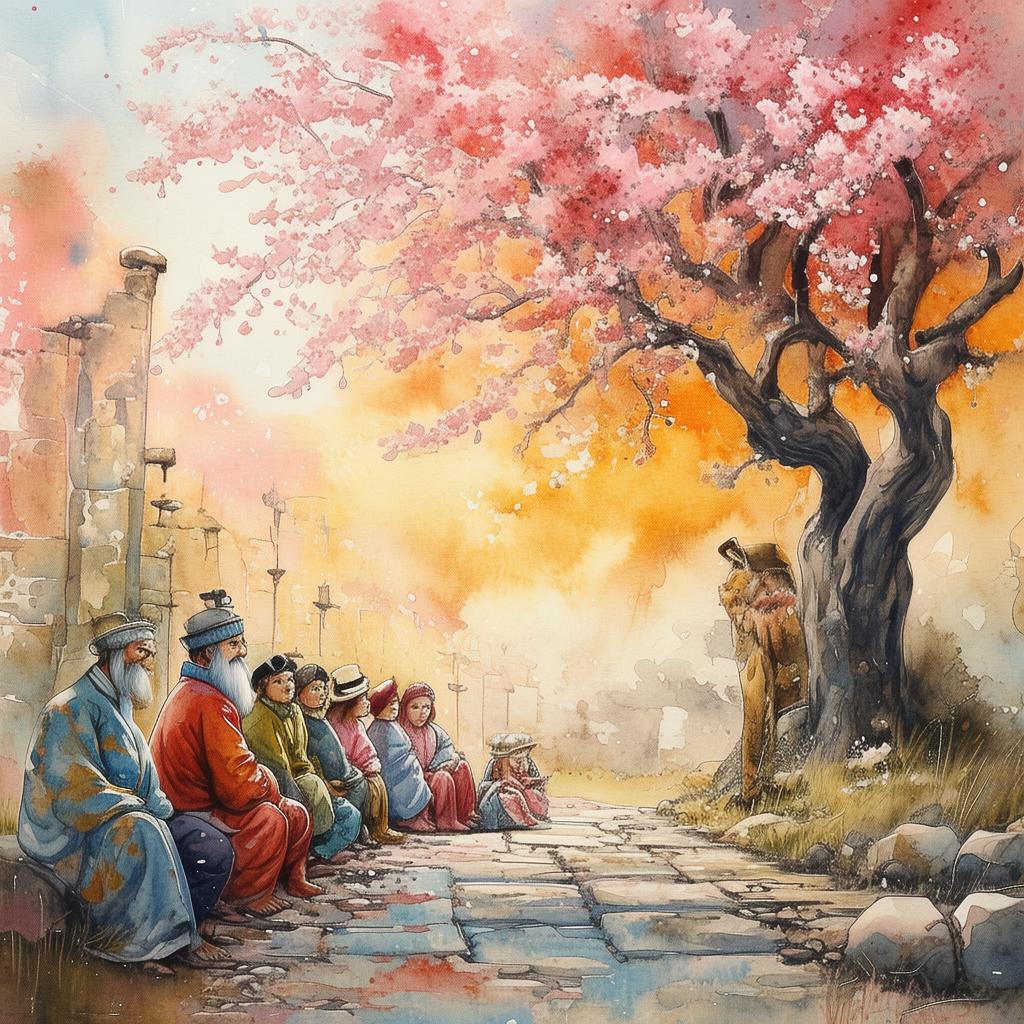The Sage's Quest Unraveling the 50-character Riddle
In the ancient land of Jingzhou, there was a sage named Ming who was revered for his vast knowledge and profound wisdom. His teachings were sought after by the common folk and the nobility alike. One day, a mysterious riddle appeared in the city square, etched into the stone wall with a charcoal stick:
"Seek the truth in silence, find the path in the void. The sage shall uncover the riddle of the ages, and the world shall know peace."
The riddle was a 50-character enigma that had baffled the greatest minds of the land. Ming, intrigued by the challenge, knew that this was no ordinary riddle. It spoke of a quest that could alter the course of history.
Ming gathered his closest disciples and began to analyze the riddle. The first line, "Seek the truth in silence," suggested a journey of introspection and self-discovery. The second line, "find the path in the void," hinted at the need to look beyond the tangible world to understand the intangible truths that governed it.
Ming decided that the first step was to seek out the origin of the riddle. He journeyed to the ancient library of the Imperial Academy, where the oldest scrolls and wisdom of the ages were kept. There, amidst the dust and cobwebs, he found a scroll that contained the history of the riddle.
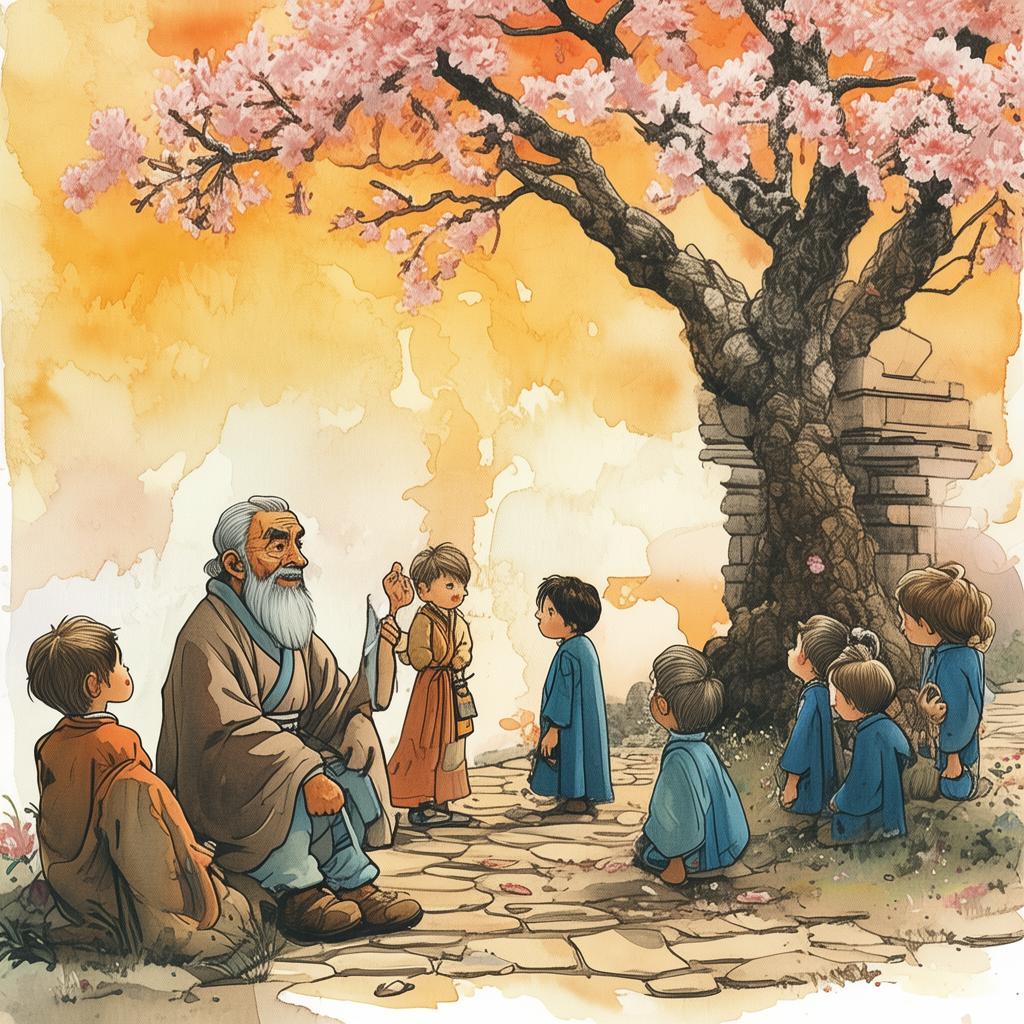
The scroll revealed that the riddle had been created by an ancient sage named Yuan, who had predicted the rise of a great civilization that would bring both prosperity and peril. Yuan had left the riddle as a test for future sages, a riddle that would only be solved by one who possessed both wisdom and courage.
Ming realized that he had to embark on a quest to find the answers to the riddle. He left his disciples with instructions to continue their studies, and he set off into the unknown, guided only by the riddle itself.
His journey took him through the mountains and across the deserts, where he encountered numerous challenges. He faced tests of his knowledge, his patience, and his determination. Each challenge brought him closer to understanding the riddle's true meaning.
One day, Ming reached a small village nestled in the mountains. The villagers were suffering from a mysterious illness that no one could cure. Ming, with his vast knowledge, quickly diagnosed the problem and provided a cure. In return, the villagers shared with him an ancient text that spoke of a hidden temple deep within the mountains, a temple that held the key to understanding the riddle's final line.
Ming continued his journey, and after many trials, he finally reached the hidden temple. The temple was a labyrinth of stone and iron, guarded by a riddle of its own. Ming solved this riddle and was allowed to enter the inner sanctum.
Inside, he found a large, ornate scroll. As he unrolled it, he saw the final line of the original riddle: "The sage shall uncover the riddle of the ages, and the world shall know peace."
The scroll revealed that the true meaning of the riddle was not about finding a path or seeking truth, but about the sage's ability to bring peace to the world. It was a call to action, a reminder that wisdom was not just about knowledge, but about using that knowledge to help others.
Ming returned to Jingzhou, where he shared his discovery with the people. He used his wisdom to bring peace and prosperity to the land, and the riddle of the 50-character enigma became a legend, a testament to the power of wisdom and the importance of using knowledge for the greater good.
Through his journey, Ming had not only unraveled the riddle but also discovered the true essence of wisdom. It was not about amassing knowledge for oneself, but about sharing that knowledge to improve the lives of others.
The story of Ming and the 50-character riddle spread far and wide, inspiring countless sages and scholars to seek not just knowledge, but wisdom. And so, the sage's quest to unravel the riddle of the ages became a symbol of the eternal quest for wisdom and the power of knowledge to change the world.
✨ Original Statement ✨
All articles published on this website (including but not limited to text, images, videos, and other content) are original or authorized for reposting and are protected by relevant laws. Without the explicit written permission of this website, no individual or organization may copy, modify, repost, or use the content for commercial purposes.
If you need to quote or cooperate, please contact this site for authorization. We reserve the right to pursue legal responsibility for any unauthorized use.
Hereby declared.
